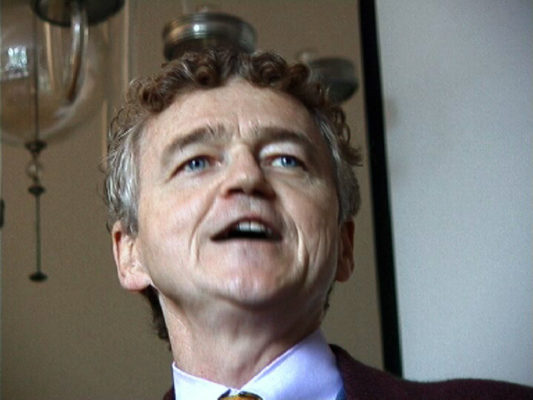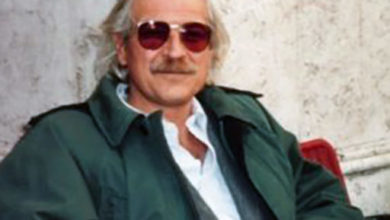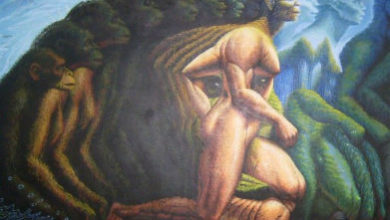Michael J. Mahoney e il Costruttivismo

Michael J. Mahoney: life and work
Michael J. Mahoney (1946-2006) is one of the founding fathers of Constructivism
The fourth common theme of constructivism is that individuals cannot be understood apart from their organic embeddedness in social and symbolic systems. Finally, all of this active, meaningful, and socially-embedded self-organization reflects an ongoing developmental flow in which dynamic dialectical tensions are essential. Order and disorder co-exist in lifelong quests for a dynamic balance that is never quite achieved. The existential tone here is unmistakable. Together, then, these five themes convey a constructive view of human experience as one that emphasizes meaningful action by a developing self in complex and unfolding relationships. One can easily see the spectrum of contributions that have constructed constructivism. They range from Taoism and the process philosophy of Heraclitus to the personal, social, and narrative emphases of contemporary constructivists like Bandura, Bruner, and Gergen.
Why is constructivism growing? Its growth is probably due to more than just the protean uses to which new terminology can be harnessed. Thomas Kuhn died in 1996, only two years after the formal declaration of `the science wars’ (Mahoney, 2004). Being such a strong believer in language communities, Kuhn would likely have rejected the language of war in science. We live out too much war language as it is, and science is the last place we need warring mentalities. The proponents of science wars have cast constructivists as adversaries of `real’ science. Shortly before his own recent death, Stephen Jay Gould (2000) chastised the warmongers who would artificially separate science from the human social networks that sustain and express it. Such artificial separations reflect the sardonic comment of constructivist philosopher Arthur Schopenhauer about there being two kinds of people in the world: those who believe that there are two kinds of people in the world, and those who do not.
There are more than two kinds of people in the world, and not all of them need to define themselves by exclusion. Differentiation is, of course, an import human need, but so also is embrace. Recent expressions of constructivism reflect this latter gesture. Anderson (2003), for example, has described constructivism as part of The Next Enlightenment, in which evolutionary theory and spirituality transcend their painful history of estrangement. More encompassing views can also be seen in the most recent writings of constructivists like Robert Kegan, Joseph Rychlak, and Ken Wilber. There is more than vocabulary to language, and more than language to community. Still, our words express important dimensions of our experience of our worlds. Our world and our experience of it are changing at rates that might well evoke vertigo. In the midst of the dizzying chaos, however, there are also signs of a deeper and loftier center. Psychology is exhibiting the stirrings of what might be called an integral movement. Constructivism is part of this process. It is not just a new horse in a theoretical race. It is a larger perspective on horses, races, and much more. In its contemporary expressions, unity and diversity are being integrated in ways that speak to traditions of holism and hope. Dialogues are taking place that suggest an evolutionary leap in our understanding of what it means to be human, to be conscious, and to be community. These dialogues are invaluable in these times, with our troubles, and in our professional helping roles. The emphasis is on connection rather than separation. The emphasis is on the active and meaningful development of selves as well as systems. And spirit – in its marvelous spectrum of meanings – pervades. Let us hope that such a diverse, emergent, and embracing spirit finds continuing encouragement.
According to Thomas Kuhn, science progresses by means of ‘essential tensions’ expressed at the boundaries of tradition and revolution. Shortly before he died, Kuhn (2000) made it clear that many popular renditions of his work had missed the point. The essential tension that he had spent a lifetime trying to understand was not the one popularized as a standoff between dogmatic theoretical conservatives and liberal anarchists. Nor was it a linear sequence of normal science disturbed by revolutionaries who – when triumphant – imposed their own norms on the subsequent cycle of history. Kuhn’s central insight was made much clearer in his final book, which was published posthumously. Scientific revolutions, he said, are born in and through dynamic changes in the everyday activities of language communities. The process is often more subtle than simple, and its power is pervasive. Kuhn saw that language is a key medium of imaginary exchange. Changes in how we use language about our worlds can reflect as well as contribute to changes we are bringing about in those worlds.
Few disciplines have changed as much or as rapidly as psychology. Even a cursory glance will reveal its robust differentiation and growth in a period of less than two centuries. The definitions of the discipline itself have undergone massive shifts. Originally defined as the science of consciousness, psychology was redefined as the science of behavior in the early half of the 20th century. That shift was part of an explicit mission launched by John B. Watson and elaborated by B. F. Skinner. Following the cognitive revolution at mid-century, basic textbooks began to render definitions that dilated again toward the more inclusive end of the spectrum. Contemporary definitions often include not only cognitive, behavioral, and emotional elements, but also biological, social, and even spiritual dimensions. The language communities that constitute the discipline are showing signs of dialectics and development.
One expression of the changing language in psychology is the increasing use of terms that express constructive dimensions. The words “construct” and “construction” have been in use for centuries, of course. But “constructivism” is a relatively new word. Yet it is appearing with an accelerating frequency in the titles of books and articles in psychology.
The verb “to construct” comes from the Latin con struere, which means to arrange or give structure. Ongoing structuring (organizing) processes are the conceptual heart of constructivism. Among the earliest recorded proponents of some form of constructivism are Lao Tzu (6th century BC), Buddha(560-477 BC), and the philosopher of endless change, Heraclitus (540-475 BC). In western cultures, constructivists often trace their intellectual genealogy to Giambattista Vico (1668-1744), Immanuel Kant (1724-1804), Arthur Schopenhauer (1788-1860), and Hans Vaihinger (1852-1933). Vico had emphasized the role of fantasy and myth in human adaptation. Kant emphasized the power of patterns in our thinking, and he regarded ideas as regulative principles in our experiencing. His “categories” were predecessors of what are now called “constructs” and “schema.”
In 1876 Hans Vaihinger elaborated some of Kant’s ideas. In The Philosophy of “As If,” Vaihinger argued that the primary purpose of mind and mental processes is not to portray or mirror reality, but to serve individuals in their navigations through life circumstances. Vaihinger said that we live our lives by means of “functional fictions.” This idea would form the cornerstone of Alfred Adler‘s theory of individual psychology. Vaihinger’s work would also influence the later writings of `personal construct’ theorist George Kelly. William James also explored several constructivist themes, and he and several colleagues carried the curiosity of constructivism across the transition from the 19th to the 20th centuries.
Drawing on the dynamic view of learning described by Johann Herbart (1776-1841), Jean Piagetdeveloped a model of cognitive development in which balance was central. Piaget described knowing as a quest for a dynamic balance between what is familiar and what is novel. He noted that we organize our worlds by organizing ourselves. This theme of developmental self-organization pervades constructive views of human experience. A powerful theoretical presentation of constructivism was offered in Friedrich A. Hayek‘s (1952) book, The Sensory Order. In this treatise, Hayek showed that “much that we believe to know about the external world is, in fact, knowledge about ourselves.” He was awarded a Nobel Prize in 1974.
Constructivism continued to grow throughout the second half of the 20th century, and it is now the focus of numerous books and two international journals. The rapidity of its growth has sometimes made constructivism seem like a recent development, when in fact it has been emerging for centuries. In 1996 the Society for Constructivism in the Human Sciences was formed to encourage and communicate developments in theory, research, and practices that reflect an appreciation for “human beings as actively complex, socially-embedded, and developmentally dynamic self-organizing systems.” Honored contributors to this Society include Walter Truett Anderson, Albert Bandura, Jerome S. Bruner, James F. T. Bugental, Donald H. Ford, Viktor E. Frankl, Kenneth J. Gergen, Vittorio F. Guidano, Hermann Haken, Yutaka Haruki, Humberto R. Maturana, Joseph F. Rychlak, Francisco J. Varela, Heinz von Foerster, Ernst von Glasersfeld, and Walter B. Weimer. Besides psychology, psychiatry, and medicine, this list includes scholars from biology, history, linguistics, neuroscience, philosophy, physics, and political science. Constructivism is clearly more than a parochial endeavor. But what, exactly, is constructivism? Five basic themes pervade the diversity of theories expressing constructivism.
These themes are (1) active agency, (2) order, (3) self, (4) social-symbolic relatedness, and (5) lifespan development. With different language and terminological preferences, constructivists have proposed, first, that human experiencing involves continuous active agency. This distinguishes constructivism from forms of determinism that cast humans as passive pawns in the play of larger forces. Second comes the contention that much human activity is devoted to ordering processes – the organizational patterning of experience by means of tacit, emotional meaning-making processes. In a third common contention, constructivists argue that the organization of personal activity is fundamentally self-referent or recursive. This makes the body a fulcrum of experiencing, and it honors a deep phenomenological sense of selfhood or personal identity. But the self is not an isolated island of Cartesian mentation. Persons exist and grow in living webs of relationships.
(died unexpectedly in his home on May 31, 2006)






